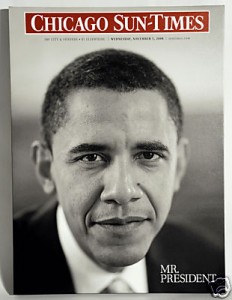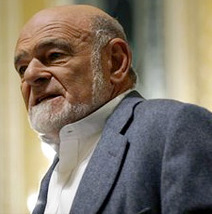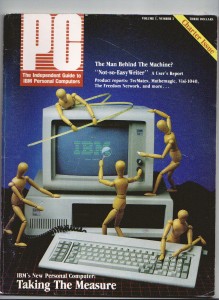Sobering news out of the American Press Institute’s executive confab in Reston, Va. last week. The newspaper industry is in a full-blown crisis and radical surgery is needed to save it, according to an executive summary. CEOs learned about the classic stages of a crisis and ran the numbers on their own businesses. All but one of the public companies in the room was “below the safe stage,” the summary said, meaning that they’re at real risk of bankruptcy.
There were strong words from the podium. Turnaround specialist James Shein of the Kellogg School of Management at Northwestern University said one of the biggest hurdles to progress is “the industry’s senior leadership, including some people in this room…I am not sure you can take a look at your industry with fresh eyes.” Remedies that were discussed ranged from waiting out the economy to hiring experts like scientists or bank regulators to replace some reporters (wait’ll you see the bill on that one). Everyone who’s still around will come back in six months to revisit the situation.
There was undoubtedly some debate about asking the government for a bailout, as the auto industry as done. Ain’t gonna happen, says Alan Mutter. For one thing, government bailouts are intended for industries that have the potential to turn things around and grow again, which is highly iffy proposition for the newspaper business. Paradoxically, a government handout would also compromise one of the most common arguments for supporting the press, which is that it provides a vital watchdog function. “It is difficult to imagine how the vigor and independence of the press would be maintained if the industry depended on the largesse of the very government officials it is supposed to be watching,” Mutter writes. Finally, the industry is just too small to make a difference in the health of the overall economy.
In Praise of Experience
Few news scribes are as eloquent and engaging as The New York Times’ David Carr and you’d do well to read this column about the foolhardiness of firing experienced employees. Pointing to veteran reporters and columnists who have been sacrificed on the altar of cost-efficiency, Carr says newspapers are effectively cutting off their nose to spite their face. Once the short-term profit boost is complete, these organizations, “won’t stay relevant to readers with generic content ginned up by newbies with no background in the communities they serve,” he writes. Read the column for more gems like that.
St. Petersburg Times columnist Eric Deggans was referenced in the Carr column, and he posts a thank-you for the recognition and an elaboration on the practice of laying off experienced people. Deggans notes that his newspaper has few senior journalists writing any more; most of the old-times have made the jump to management or left the paper. He wonders if the loss of veteran old-timers will leave a gap for the next generation: “I wonder if we’ll reach a point where only the best writers can keep doing the job as they age, creating a bit of a generation gap between writers and editors,” he asks. That would be a loss because youngsters need the wisdom of older scribes who aren’t their bosses, Deggans says.
In Condemnation of Euphemisms
It isn’t a layoff, it’s an evolution. At least, that’s how a column by Ventura County Star Editor Joe Howry describes it. “At The Star, our plans were to continue intensifying our focus on local news… Life, in the form of the economic downturn, has forced us to speed up those plans,” he wrote last Sunday.
What really happened is that the Star recently laid off 44 people and consolidated its weekday paper to conserve space. In Howry’s view, though, the cutbacks are simply part of an “evolution” centered around “preserving the quality and quantity of local news.” Not once does his editorial mention layoffs or cost reductions. LA Observed’s TJ Sullivan finds absurdity in the message. Sullivan doesn’t doubt it was painful for Howry to let so many people go, but he thinks they deserved a more honorable send-off that to be referred to as victims of efficiency. Journalists are supposed to tell the truth, he says. Don’t candy-coat downsizing. Admit it sucks and move on.
Newspaper Outsourcing a Growth Industry
Research and Markets has released a report entitled “Offshoring By US Newspaper Publishers” that sees big growth in the newspaper outsourcing industry, particularly in India. About 2,300 people were employed offshore to serve US and UK newspaper companies in July, 2008, the report says. Most of the work is in ad production. Overall revenues of the business are estimated at $35 million this year (quick calculation: about $15,000 per head), growing to $120 million by 2012. “The total offshore opportunity from newspaper publishers is estimated to be approximately $3.5 billion,” the summary says, although it doesn’t specify whether that’s an annual figure or a total of several years. However, vendors still “need to build client confidence in terms of delivering consistently good quality of output and quick turnaround.” You can download your own copy for 437 euros (about $555).
Miscellany
The New York Times has closed its quarterly sports magazine Play because of slow ad sales. Assistant Managing Editor Gerald Marzorati called the closure the “hardest professional call I’ve ever made in my life,” but with the magazine losing six-figure sums every year, there was no viable alternative. The quarterly was said to be a favorite of New York Times Co. Chairman Arthur Sulzberger. According to The Wall Street Journal, “The Times explored several options to keep the magazine afloat, including cutting editorial staff, publishing it only online and signing a single advertiser for each issue. New York Observer says no staff positions will be cut because the content was mainly freelanced and the only staff employee will be reassigned within the organization.
The Erie (Pa.) Times-News will use a “generous” buyout to reduce staff by 25 employees, or 9 percent of its 273-person workforce. The buyout, which is available to 51 employees, provides up to five years of company-paid health insurance, or an equivalent flat payment, plus a $10,000 signing bonus for each eligible employee who accepts. The paper has actually been growing weekday circulation in the past year, but “broad economic market conditions” mandate the cuts. The publisher said no layoffs will be necessary in 2009 if enough people accept the offer.
The Sun-Times Media Group (STMG) is cleaning house in a concession to two big shareholders. Several board members will resign in the first stage of a complete restructuring of the governing body. The company will also lose a special monitor who was assigned to keep an eye on things following an earlier scandal in which two executive were jailed for stealing. STMG is also deregistering its Class A common stock and will now trade on the pink sheets, which require less regulatory overhead.
The industry’s malaise is spreading overseas. The UK’s Independent is laying off 20% of its staff, or about 90 people. The company’s managing director said the business is “racking up losses that would threaten the very survival of these papers.” Trinity Mirror, which is the country’s largest local newspaper publisher, recently said it had quietly closed 28 titles this year.
The southern California-based North County Times has cut 25 newsroom jobs, or about 25% of its workforce. Ironically, the paper also has a column this week by John Van Doorn, who was laid off after 58 years as a reporter and editor. The veteran New York newspaperman could be excused for being cynical about the whole thing, but his farewell piece (pre-published in Editor & Publisher) is actually quite uplifting.
Van Doorn thanks an industry that gave him the opportunity to “reside in 11 countries and work in 35, rub shoulders with presidents, prime ministers and a king or two, and with ordinary people far more substantive, such as the North County population.” And he’ll be back. “I cannot not write,” he concludes, inducing paroxysms in Microsoft Word’s grammar checker.
And Finally…
 This year may go down as the worst ever for the newspaper industry, but 2008 also ironically included one of the best single-day sales milestones in history: the day after the presidential election. Issues flew off the newsstands in record numbers following Barack Obama’s victory, as readers sought to capture a moment in history.
This year may go down as the worst ever for the newspaper industry, but 2008 also ironically included one of the best single-day sales milestones in history: the day after the presidential election. Issues flew off the newsstands in record numbers following Barack Obama’s victory, as readers sought to capture a moment in history.
Now the Chicago Sun-Times is going one step further by offering 44 copies of its Nov. 5 front page as a “museum wrap fine art giclée print on canvas.” If, like us, you’ve managed to live your entire life without knowing what giclée is, Ed Chasen Fine Art describes it as “a French term used to describe a specialized process in which pigmented inks are applied to canvas or paper to reproduce a fine art reproduction.” Regardless, the first 15 copies have so far failed to elicit a single bid starting at $350 each on the auction site, although there are still several days left.
 Sam Zell is getting credit from his critics for telling it like it is in this interview with Condé Nast Portfolio at Quadrangle Group’s Foursquare media conference. The famously combative Tribune Co. CEO reinforces remarks he’s been making all year about treating newspapers like businesses. That means questioning everything from sales incentives to the importance of journalism prizes if they don’t contribute to the bottom line. Some nuggets:
Sam Zell is getting credit from his critics for telling it like it is in this interview with Condé Nast Portfolio at Quadrangle Group’s Foursquare media conference. The famously combative Tribune Co. CEO reinforces remarks he’s been making all year about treating newspapers like businesses. That means questioning everything from sales incentives to the importance of journalism prizes if they don’t contribute to the bottom line. Some nuggets: Speaking of Zell, we can’t help notice that it’s been more than two full months since the wonderfully snarky Tell Zell blog has posted an update. We’ve heard that management at the LA Times has recently been coming down on internal critics like a ton of bricks and we hope that the blog’s anonymous author, InkStainedRetch, is simply in hiding, waiting for another chance to ply his or her viciously eloquent talents at a future date.
Speaking of Zell, we can’t help notice that it’s been more than two full months since the wonderfully snarky Tell Zell blog has posted an update. We’ve heard that management at the LA Times has recently been coming down on internal critics like a ton of bricks and we hope that the blog’s anonymous author, InkStainedRetch, is simply in hiding, waiting for another chance to ply his or her viciously eloquent talents at a future date.








